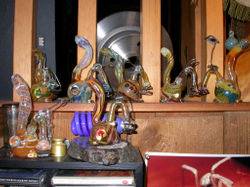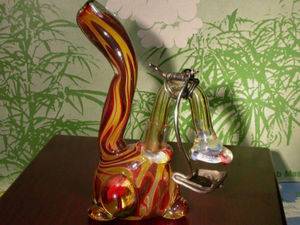illchemist
Member
Trust me, I love BHO and all that it offers: the supercritical fluid extraction, the look, the smell, taste, blastoff... but evaporating hydrocarbons into the atmosphere is one of the main sources of ground level ozone pollution. Why add to the problem?
Volatile hydrocarbons (solvents, gasoline, etc.) enter the atmosphere and react with the intense UV light up there. This creates a free radical that reacts with oxygen (O2) to make ozone (O3). This ozone is one of the main lung health concerns in major cities.
A solution to the problem would be to use another low-boiling, non-polar, solvent like pentane or hexane and recover the solvent by means of distillation. The solvent can then be recycled. However,you lose some of the ultra-selective benefits of the supercritical fluid. If you want to retain the selective benefits of supercritical fluid extractions, please use super-critical liquid CO2 as this is readily abundant and non-polar (maybe we could sequester the worlds CO2 output for CDHO production? ). It should produce similar results.
). It should produce similar results.
bless...
ill
Volatile hydrocarbons (solvents, gasoline, etc.) enter the atmosphere and react with the intense UV light up there. This creates a free radical that reacts with oxygen (O2) to make ozone (O3). This ozone is one of the main lung health concerns in major cities.
A solution to the problem would be to use another low-boiling, non-polar, solvent like pentane or hexane and recover the solvent by means of distillation. The solvent can then be recycled. However,you lose some of the ultra-selective benefits of the supercritical fluid. If you want to retain the selective benefits of supercritical fluid extractions, please use super-critical liquid CO2 as this is readily abundant and non-polar (maybe we could sequester the worlds CO2 output for CDHO production?
 ). It should produce similar results.
). It should produce similar results. bless...
ill
Last edited:











